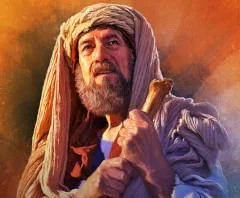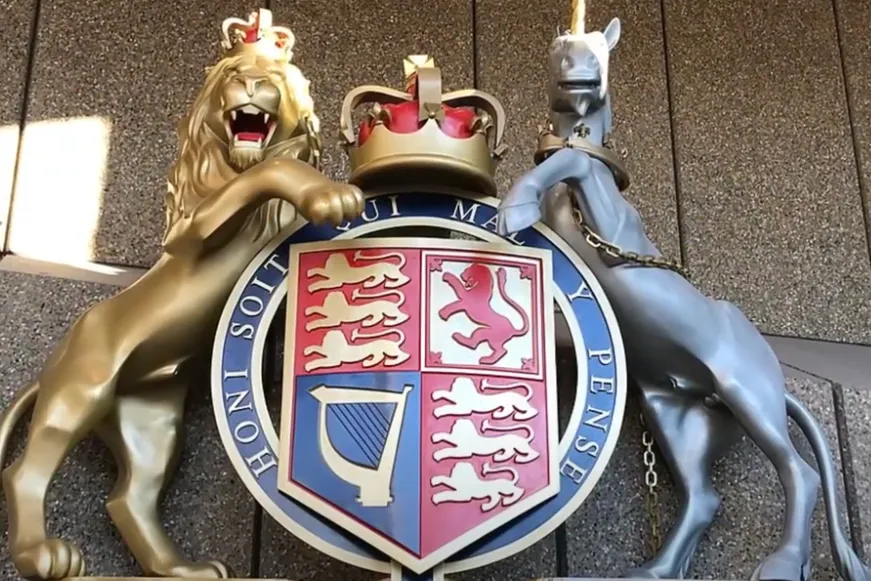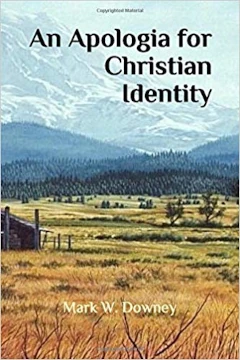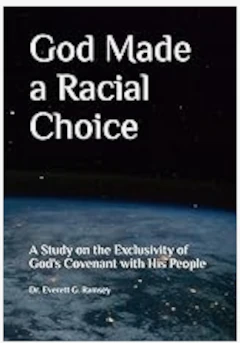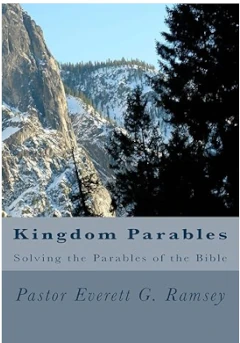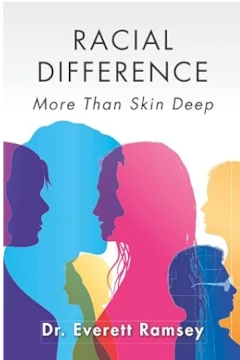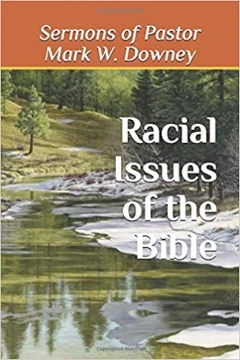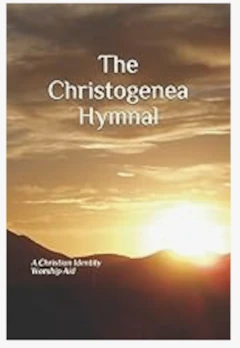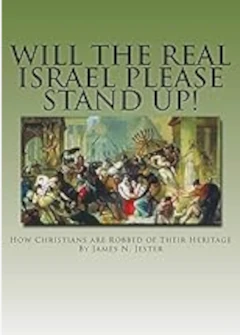The Rock 'n Roll Church
by Pastor Don Elmore
August 24, 2014
Scripture Reading: Revelation 18:4
“And I heard another voice from heaven, saying, Come out of her, my people, that ye be not partakers of her sins, and that ye receive not of her plagues.”
The Church and its Music
The church began with their singing of the Psalms that are found in the middle of their Bible. The Psalms were put to music and the congregation sang the praises to our God. Over the last several hundreds of years new hymns were written; some good, some bad. But in the last fifty years, something new has slipped into the churches: the singing of rock ‘n’ roll. The church is drawing closer and closer to the world and not to God. The church is serving other gods and not the God of the Bible. The church has learned the way of the heathen.
Colossians 3:16: “Let the word of Christ dwell in you richly in all wisdom; teaching and admonishing one another in psalms and hymns and spiritual songs, singing with grace in your heart to the Lord.”
What exactly is the popular Rock ‘n’ Roll? It was not played in America until about 70 years ago. It first had its beginning in ancient Babylon. In fact its origins are purely religious, being an integral part of orgies and devil worship. This entire system of pagan worship, including the music, eventually filtered down into Egypt.
Egypt is where many modern historians directly trace the origins of rock music. We know that it was used to alter the emotions, it was used to create mass hypnosis and especially to incite immorality.
From ancient Egypt, it spread to the jungles of Africa. It was part of their religion. Music in Africa intricately involved into devil worship, altering the conscious state and inciting sexual orgies. This music subsequently found its way across the Atlantic to America aboard slave ships.
When the jewish financed and promoted black-slave trade triangle began, the blacks took their religious traditions with them. It went to Brazil, the Caribbean Islands, America and other places in South and Central America. Haiti, one of the central places where the slaves congregated, kept up their religious beliefs and music. The main area of America that the practitioners of Voodoo settled was New Orleans.
The black slaves could not bring anything material to the new places of the world that they were being kidnapped; but they could take their:
- Voodoo worship
- Pagan ritual dances
- Sexual drum beats
According to Leonard Seidel: “As with the Colony slaves, THEY BROUGHT WITH THEM ONLY THEIR WORSHIP OF GODS, THEIR DANCES AND THEIR DRUM BEATS.”
The exposure of this African music and dance tradition to the White public was a form of music called jazz, swing and rhythm & blues. Authorities agree that work songs from the cotton fields, rural and urban blues, banjo styles from minstrel shows, syncopated brass bands and ragtime and Voodoo all played an important role in the eventual formation of rock ‘n’ roll music.
Eventually jazz evolved into what we know today as rock and roll, however it lost none of its heritage in its long journey from Babylon to Egypt to America and then to the world. It has simply been repackaged in a different form with the same rhythms and qualities which originated with devil worship, immortality, and rebellion (witchcraft).
We have seen that the roots of rock come directly from the rites of pagan worship. Therefore the use and effects of it are the same today as then. Rock motivates you internally, gives you a sensual feeling. A girl can be turned on by the music. It releases her inhibitions. The beat of the drum has always been a factor. A girl realizes her own sexuality through the music. A steady diet of rock and roll promotes degenerate rebelliousness among teenagers that finds its outlet in drugs, alcohol and illicit sex.
Remember that the Scriptures tell us to “not learn the way of the heathen” (Jeremiah 10:2).
Notice what is written in the book written by the first black woman to be appointed a tenured full professor at Harvard University; about the music of the blacks who were taken into slavery:
“There is no question that Haiti was the central place where African religious traditions syncretized with Catholic beliefs and practices to produce vaudou” (voodoo) “the ceremonies centered upon worship of the snake god Damballa through singing, dancing, and spirit possession” Eileen Southern, The Music of Black American, 1983, p. 139.
 Voodooists believe in a distant and unknowable creator god, Bondye. As Bondye does not intercede in human affairs, voodooists direct their worship toward spirits subservient to Bondye, called Ioa. In Haiti and in New Orleans, the principal places of this worship, he is often depicted as a serpent and is closely associated with snakes. Damballa is considered the father of all evil spirits.
Voodooists believe in a distant and unknowable creator god, Bondye. As Bondye does not intercede in human affairs, voodooists direct their worship toward spirits subservient to Bondye, called Ioa. In Haiti and in New Orleans, the principal places of this worship, he is often depicted as a serpent and is closely associated with snakes. Damballa is considered the father of all evil spirits.
Every Ioa is responsible for a particular aspect of life, with the dynamic and changing personalities of each Ioa reflecting the many possibilities inherent to the aspects of life over which they preside. In order to navigate daily life, Voodooists cultivate personal relationships with the Ioa through the presentation of offerings, the creation of personal altars and devotional objects, and participation in elaborate ceremonies of MUSIC, DANCE, and SPIRIT POSSESSION.
Damballa was a Voodoo god, in serpent form, who is credited with creating the world and the gods, and is therefore the oldest of the gods. Notice that his lower part of his body is a serpent.
 One of the symbols of the god Damballa; some worshipers become possessed with this god during Voodoo ceremonies. He does not talk through them as some Ioas would but makes a hissing noise like a snake.
One of the symbols of the god Damballa; some worshipers become possessed with this god during Voodoo ceremonies. He does not talk through them as some Ioas would but makes a hissing noise like a snake.
“Their [black slaves from Africa] religious worship was based on drums and dancing, and as they worshipped a god or demon, the ultimate experience was to have their bodies possessed by that demon. The rituals were grossly sensualistic and sadistic.” (Ibid.).
Dances were enticing to each of the two sexes; which in many cases in America became sadistic or violent in the night clubs, high school gyms and cafeterias.
We are not to worship our God with our senses. We are to worship Him in Spirit and in truth. Music that is performed and written by Christian’s is the music that most Christians should listen to; not music written by non-Christian and performed by non-Christians. Music in which the melody is emphasized, not the rhythm, is the preferred kind of music.
But just because it is played by your fellow kinsman, that doesn’t make it right either. When Moses copied what God instructed him on the Ten Commandments on the stone tables and as he was coming down the mountain to teach the Israelites about these Commandments, his servant Joshua heard the noise coming from the Israelite camp. He said: “There is a noise of war in the camp” (Exodus 32:17).
But Moses said to Joshua that it wasn’t a shout for mastery, but was the noise of singing. When they came to the camp, they saw the singing and dancing near the calf and he got angry. He took the calf and burnt it in the fire, and ground it to powder and put it in the water and made the children of Israel drink of it (Exodus 32:20). What kind of music were they singing and dancing to; it must have been evil?
“Of all the individuals related to ritual activity it is the drummer whose role would seem almost analogous to that of an individual virtuoso…Haitian ritual drumming requires more explicit craft training and practice than any other ritual activity” —Maya Deren, Divine Horseman—the Living Gods of Haiti, p. 233, 1953
Further, Miss Deren writes that it is “upon the drummer that the burden falls of integrating the participants into a homogeneous collective. It is the drumming which fuses the fifty or more individuals into a single body, making them move as one, as if all of these singular bodies had become linked on the thread of a single pulse—a pulse which beats, sending the body into a slow SERPENTINE undulation which begin in the shoulders, then the spine, legs and hips” Deren, Divine Horsemen, p. 235.
Many youth groups now are participating in “hip hop” and other forms of dancing to popular music. In fact, now after the children have grown up into the next generation of parents, churches are now having this same music in their church services. The new mega churches have it and the old time denominations of early America have compromised and many of them have one contemporary service and one traditional service each Sunday.
Notice what took place in a conversation between a Voodoo’s priest’s son and Jimi Hendrix: “Rocki’s father was a Voodoo priest and the chief drummer of a village in Ghana, West Africa. Rocki’s real name was Kwasi Dzidzornu and one of the first things Rocki asked Jimi Hendrix was where he got that voodoo rhythm from. When Jimi demurred, Rocki went on to explain in his halting English that many of the signature rhythms Jimi played on guitar were very often the same rhythms that his father played in voodoo ceremonies. The way Jimi danced to the rhythms of his playing reminded Rocki of the ceremonial dances to the rhythms his father played to Oxun [Thor], the god of thunder and lightning.”
Now let us look at a quote from an English singer-songwriter and musician who is probably best known for his hit in 1988 of “Simply Irresistible.” His name is Robert Palmer.
“The idea that certain rhythm patterns or sequences serve as conduits for spiritual energies, linking individual human consciousness with the gods, is basic to traditional African religions and African-derived religions throughout the Americas. And whether we’re speaking historically or musicologically, the fundamental riffs, licks, bass figures, and drum rhythms that make rock and roll rock can ultimate be traced back to African music of a primarily spiritual or ritual nature.”
In the earlier days of Rock ‘n’ Roll, there were churches who burnt up their records and audio-tapes of their music that they had acquired. It was similar to what happened in the early days of the church, when they burnt their books on magical arts.
“In a sense, rock and roll is a kind of ‘voodoo,’ rooted in a vigorous tradition of celebrating nature [that which the Bible calls ‘the flesh’] and spirit that is FAR REMOVED from the sober patricarchal values espoused by the self-appointed guardians of western culture” [this is a reference to Bible-believing Christians], “among others” Robert Palmer, Rock and Roll an Unruly History.
This rock and roll singer is saying that the music that he wrote and sang is “Voodoo.” Its basis is foreign to the Western Bible-based culture that the United States had for years. Almost single-handedly the rock & roll music has turned our nation into a pagan society.
In a 1982 interview with one of the fathers of Rock & Roll, Jerry Lee Lewis, researcher Steve Turner asked what power falls on Jerry Lee when he performs. Lewis replied: “The power of voodoo” Turner, Hungry for Heaven, p. 26. Jerry Lee Lewis was related to Jimmy Swaggart; both of these cousins were drunks and womanizers.
Is the old Rock and Roll okay to listen to? The lyrics were a lot tamer and in some songs were innocent; but they all had the beat. Hear what one of the old Rock and Rollers say about the music of back then.
“My true belief about Rock ‘n’ Roll—and there have been a lot of phrases attributed to me over the years—is this: I believe this kind of music is demonic…A LOT OF THE BEATS IN MUSIC TODAY ARE TAKEN FROM VOODOO, FROM THE VOODOO DRUMS. If you study music in rhythms, like I have, you’ll see that is true…I believe that kind of music is driving people from Christ. It is contagious” Little Richard, quoted by Charles White, The Life and Time of Little Richard, p. 197).
“The Blues were an indigenous creation of black slaves who adapted their African musical heritage to the American environment. Though taking many forms and undergoing many permutations through the years, the blues formed the basis of rock-and-roll. Probably most important, the slaves, accustomed to dancing and singing to the beat of drums in Africa, emphasized rhythm over harmony” A Time to Rock: A Social History of Rock ‘n’ Roll, David Szatmary, p. 2.
The Bible says to make melody in your heart. When rhythm is the main part of a song, it is backwards and wrong. The drums, when it leads, takes the person to the wrong god.
“It is hard to pinpoint the exact moment when I awoke to the fact that my tradition—rock and roll—did have a spirit side, that there was a branch of the family that had maintained the ancient connection between the drum and the gods” Mickey Hart, drummer for the Grateful Dead, Drumming at the Edge of Magic, pp. 209, 210, 212.
Christian Rock & Roll is an oxymoron. Rock ‘n’ Roll is a very dirty term. In the 1890’s with the invention of the photograph; you didn’t have to hear the music in person. Within a few years, you could buy a record and hear the music. Technology, changed quickly. In the 1950’s the creation of a portable radio gave the opportunity for the music to be heard anywhere, anyplace and at any time. Then tapes, CD’s, movies, DVD’s carried the rock & roll music; but when cell phones held the music; they couldn’t be burnt and destroyed for just the music. You would have to destroy the entire cell phone or I-pad!
Crosby of Crosby, Stills & Nash made the bragging statement: “I figured that the only thing to do was steal their kids. I still think it’s the only thing to do…I’m not talking about kidnapping…but about changing young people’s value system.”
The sexuality of music is usually referred to in terms of rhythm, it is the beat that commands a directly physical response. The rock beat is musical perversion; the sound of lawlessness. The beat of rock is nothing new; the pagan, animistic tribes had the “rock beat” long before it came to America with them. They use the driving beat to get “high” and bring them into an altered state of consciousness. Traditional drumming and dancing techniques practiced by the African slaves were a vehicle for demon infestation. And today, rock and roll music is designed to cast a demonic spell on the listener.
How did Rock & Roll Get Into the Church?
Elton John is a witch! Elton John is a sodomite! Rock music is planned by the satanic church in order to cast spells on people, and the music is laden with “witch words” that are purposely placed in the songs, and have a satanic meaning behind them.
I used to love Elton John. I use to love almost all rock & rollers until the 1970’s until it got into heavy metal. But I still listened to and liked the “oldies”: The Platters, Fifth Dimension, Neil Seidaka, Diana Ross and the Supremes, Michael Jackson, The Righteous Brothers, The Doobie Brothers, Chuck Berry, Little Richard, The Shirelles, The Crystals, Buddy Holly, Fats Domino and literally dozens of others. I would turn my radio on and listen to the music until I fell asleep; the rock & roll played on my radio all night.
I even went to four concerts:
- Diana Ross of the Supremes (twice)
- The Fifth Dimension
- The Doobie Brothers
 I thought that the Dobbies’ were brothers; all with the last name of Doobie. But much later I learned that “Doobie” was slang for marijuana cigarettes! “Takin’ it to the Streets” and “Minute by Minute” were a couple of songs that they sang.
I thought that the Dobbies’ were brothers; all with the last name of Doobie. But much later I learned that “Doobie” was slang for marijuana cigarettes! “Takin’ it to the Streets” and “Minute by Minute” were a couple of songs that they sang.
At this time, rock music was being rejected by the church. How did this music get into the church? It is a fantastic story; it is the story of a hippie preacher who crept into the church and changed it forever.
Deuteronomy 7:26: “Neither shalt thou bring an abomination into thine house, lest thou be a cursed thing like it: but thou shall utterly detest it, and thou shalt utterly abhor it; for it is a cursed thing.”
 Charles Ward “Chuck” Smith (June 25, 1927 – October 3, 2013) was an American pastor who founded the Calvary Chapel movement. Beginning with the 25-person Costa Mesa congregation in 1965, Smith's influence now extends to thousands of congregations worldwide, some of which are among the largest churches in the United States. He has been called “one of the most influential figures in modern American Christianity.” He is also known as “one of the most influential Christian pastors who is known for training other prominent ministers.”
Charles Ward “Chuck” Smith (June 25, 1927 – October 3, 2013) was an American pastor who founded the Calvary Chapel movement. Beginning with the 25-person Costa Mesa congregation in 1965, Smith's influence now extends to thousands of congregations worldwide, some of which are among the largest churches in the United States. He has been called “one of the most influential figures in modern American Christianity.” He is also known as “one of the most influential Christian pastors who is known for training other prominent ministers.”
Smith graduated from Foursquare Gospel’s L.I.F.E. Bible College, which was started and directed by Aimee Semple McPherson, and was ordained as a pastor for the International Church of the Foursquare Gospel, (Savior, Healer, Baptizer and coming King) a Pentecostal church. This church also was started by McPherson and did not prohibit any race from being a member. Later he left this denomination to pastor a non-denominational church plant in Corona, California, and eventually moved to a small pre-existing church called Calvary Chapel in Costa Mesa, California in December 1965.
The church grew and, as of 2006, was attended by 35,000 people and had spawned over 700 churches that have branched out as part of the Calvary Chapel fellowship worldwide.
At its beginning, Calvary Chapel operated as a cross-cultural missions organization that bridged the “generation gap” as it existed during the Vietnam War period. Calvary Chapel was a hub of the “jesus flower people” phenomenon that existed at that time and was featured in Time Magazine for its success among “hippies” and young people. Calvary Chapel pioneered a less formal and contemporary approach in its worship and public meetings; for example, it did outreaches on the beach, and baptisms in the Pacific Ocean; for this is where the mostly young people were who were turned off to the authority groups.
Much of Contemporary Christian Music (CCM) has its roots in Calvary Chapel worship music. Calvary Chapel developed its own internal training early for multiplication of church leaders and pastors; by pioneering a more informal and contemporary style in its church practices. Calvary Chapel reached large numbers in Costa Mesa, California and expanded easily by adding many pastors and new congregations in many locations. Thousands of people came to Christ as a result of the movement, many going on to become ministers and evangelists themselves. Contemporary Christian music (rock ‘n’ roll) exists largely in part to this movement, and there are hundreds of large churches today that can trace their roots back to the jesus movement and Calvary Chapel.
The impact of Chuck Smith and Calvary Chapel on evangelical Christianity is profound, widespread, and largely unheralded. Rather than being a teacher of systems and methods of growing large churches (elements of which frustrated him in his denominational experience), Chuck Smith teaches at pastors’ conferences modeling in word and deed what he feels is the critical core of Calvary Chapels.
To his ragged following he was “Papa Chuck,” and he welcomed them to his church by the thousands, accepting the jesus peoples’ barefoot, floor-sitting, outdoor-living habits and incorporating their ROCK MUSIC into his Sunday services — an innovation that other evangelical churches as well as many mainline Protestant and Roman Catholic churches later adopted. But he was the first.
His decision to dispense with the traditional liturgy, replace pipe organs with electric guitars, preach from the pulpit in a Hawaiian T-shirt if he felt like it and give the same come-as-you-are rights to worshipers; set the standard in the 1970s for what has been called the “new paradigm” of independent Christian megachurches: no written or unwritten dress code.
Mr. Smith’s disavowal of denominational labels — he did not call his church Pentecostal, Methodist, Baptist or Assembly of God, but rather “just a Christian church” — has also been widely embraced in the evangelical world.
In 1971, Mr. Smith helped found Maranatha Music, one of the first contemporary Christian record companies in the United States, partly to provide a platform for the Christian musicians and songwriters who performed at his church. The group Love Song, referred as the “Beatles of the Christian World,” one of the first “Christian” rock groups, was for a time a kind of house band at Calvary Chapel.
They were a part of the jesus movement of the late 60s and early 70s, coming out of Chuck Smith's Calvary Chapel. Their classic debut album, Love Song [1972], is considered one of the greatest “Christian” music albums of all time. The group toured heavily in the early 70s, becoming very popular both in the United States and abroad.
By 1976, the jesus movement music was being replaced by “Christian” Contemporary Music [CCM] as the leading style of “Christian” rock, and it was becoming more business than ministry. Many of the bands that had started the movement began to break up.
So from the “flower people” sprouted the Calvary Chapel, the Vineyard Churches, “Christian” Contemporary Music, and the Campus Crusade for Christ, Fellowship of Christian Athletes, and many other similar groups. Even many denominational churches let their large youth groups begin to sing the songs of the “jesus movement hippies.” They let them use a guitar, then later drums, then electric guitars; then eventually all the instruments for rock and roll. Eventually it spread from the youth groups to the church service. Many denominations now have a contemporary service, including the rock ‘n’ roll music, and a traditional service on Sunday. By 1975 many of the songs of the new music was in the new Hymn Book.
In his 1978 book End Times, Smith predicted the generation of 1948 would be the last generation, and that the world would end by 1981 at the latest. Calvary Chapel held a New Year's Eve service in 1981 for their followers to wait for the end to occur in accordance with Smith's prediction. When the world failed to end, many disillusioned followers left the Calvary Chapel movement.
In 2006, Smith was instrumental in removing his son, Chuck Smith Jr., from ministry in the Calvary Chapel movement. The Los Angeles Times reported that Smith Jr. was dismissed when he raised questions about his father's theological beliefs and philosophy of ministry.
A "New" Church Was Created
Chuck Smith, a Southern California minister who shepherded flower children and rock ’n’ roll into the conservative wing of the evangelical movement while building a religious organization that grew to encompass 700 congregations and hundreds of radio stations. Youth ministries developed; desirous to see God work in a revival. Healings, very little theology, unification, drastic change in the worship service, universalism, arminianism; as a result the church became the world.
In 1996, Mr. Smith and a protégé, Mike Kestler, founded the Calvary Satellite Network, which broadcasts sermons and “Christian” music over about 400 low-power and 50 full-power stations in 45 states. Mr. Smith himself was never a fiery preacher and rarely appeared on television. His sermons, with line-by-line explications of the Bible, were more professorial than charismatic.
Outside Calvary Chapel, he was probably best known for the people he mentored. Those who went on to lead large evangelical organizations of their own included Greg Laurie, pastor of Harvest Christian Fellowship, a network of several hundred churches; and Kenn Gulliksen, the founder of a church movement called Vineyard. Mr. Gulliksen introduced Bob Dylan to evangelical Christianity, which Mr. Dylan embraced in the 1970s and early ’80s. Mr. Gulliksen is often referred to as “Bob Dylan’s pastor.”
Bob Dylan, who is a jew, sang the song, “The Times They are A-Changin.” This song referred to the times of the civil rights movement in the United States. The video of the song begins with a politician from the South saying the following: “All the people of the South are in favor of segregation. And Supreme Court or no Supreme Court, we are going to maintain segregated schools down in Dixie.”
The song was about the changes that occurred in America. It was the same changes that were about to happen in the Christian Church. The churches went from being an independent, straight-only marriages, segregated churches to a diverse, same-sex marriages, multi-cultural, sodomite, rock ‘n’ roll, integrated, and state run 501 C (3) churches.
It was Mr. Smith’s simple teaching style and easygoing manner, mainly, that drew members of the jesus movement to his church in 1969, after his own teenage children had introduced him to movement followers they had befriended at the beach. One was Lonnie Frisbee, a self-described mystic and prophet who became prominent in the movement. He was sexually abused as a young child and as a youth he got involved in the drug culture. When he was 15 he became active in the gay underground scene and he began to actively embrace the free-love hippie attitude of the 60’s.
Lonnie Frisbee was a young hippie seeker fully immersed in the 1960s counter culture when he claimed to have experience an encounter with God while on an acid trip. This even so transformed him that Lonnie became an itinerate “Christian” evangelist, something of a John the Baptist of Southern California who compelled thousands toward a profession of Faith in Jesus Christ. What makes this story most fascinating is that his call into the ministry came while he was deeply involved in the Laguna Beach homosexual scene. He was a homosexual, hippie preacher, who loved rock ‘n’ roll!
With Mr. Frisbee as his liaison, Mr. Smith was soon holding mass baptisms in the Pacific Ocean, dunking longhaired men and women in the Pacific by the hundreds. Frisbee preached over 16 times in Africa, many times in Europe and was greatly honored in America. Frisbee later died of AIDS.
Some called them “jesus freaks,” a phrase Time Magazine used in a 1971 cover article about the movement. It was Chuck’s embracing of Frisbee that drew the massive crowds of young hippies during the Jesus Movement …who then grew up and were institutionalized by the opportunistic and shrewd businessman, Chuck Smith.
“It looked like no congregation anyone had ever seen before,” Mr. Laurie wrote in his 2008 memoir. “Barefoot hippies sat on the floor, praising the Lord, while old ladies in hats smiled, shrugged and sang their hymns.”
In 1977, John Wimber, an evangelical pastor and teacher on church growth, founded a Calvary Chapel in Yorba Linda, California. Wimber's teaching on healing and the ministry of the Holy Spirit led to a conflict with Calvary Chapel. It was suggested that Wimber's church stop using the Calvary name and affiliate with Gulliksen's Vineyard movement. In 1982, Wimber's church changed its name to the Anaheim Vineyard Christian Fellowship. Gulliksen turned over the churches under his oversight to Wimber, beginning his leadership of the Vineyard movement.
I first became aware of the Vineyard church when they passed out free pop-soda at the high school. They said it was a “random act of kindness” that they were demonstrating. This is something that was both taught and the members regularly did and still do.
John Wimber played the keyboard for the Paramours later renamed the Righteous Brothers. Married into the Roman Catholic Church, he attended the Quaker church. When he eventually left his music job with the Righteous Brothers, he eventually became a Quaker Pastor in 1970. He left the pastorate and became the founder and lecturer for the Fuller Church Growth Institute. In 1977 he left Fuller and starting a local church. It began in his living room, grew to 50 people and eventually swelled to some 6000 members and became known as the Vineyard Christian Fellowship of Anaheim, California.
Eventually that lead to the Toronto Blessing; and to “holy uncontrollable laughter” of Lakeside, Florida, which spread to all parts of the earth. For centuries the behavior that happened at these churches would be regarded as evidence of demonic influences. It was very similar to what happened in the early 1800s, very close to where we live; in the Cane Ridge and trans-Allegheny wilderness that started out with a “slaying of the spirit.” It too started out with a rock and a roll. It was there that many of the attendees were slain by the spirit and would fall to the floor or grassy ground. In other places, they would laugh uncontrollably.
Explo ‘72 - Billed as the “Spiritual Woodstock” or “Godstock,” the Campus Crusade sponsored event featured a number of evangelical leaders and Jesus Music performers in a week long campaign (May 12-17). Featured artists were Love Song, Larry Norman, Randy Matthews, Children of the Day, Johnny Cash, and Kris Kristofferson. The week was closed with a sermon by Billy Graham who had recently penned a book affirming his allegiance with “The Jesus Generation.
When John Wimber—a rock ‘n’ roll musician with the Righteous Brothers—was apprehended by God he was, as Christianity Today magazine described him, a “beer-guzzling, drug-abusing pop musician, who was converted at the age of 29 while chain-smoking his way through a Quaker-led Bible study.”
John was always an advocate of church unity and spent seasons of his life hanging out with different denominations and movements. He would insist that where the name of Jesus was honored be it among snake-handling churches or those worshipping with their candles and their incense, all who loved Jesus were his brothers and sisters.
So, it started from the Calvary Chapel which incorporated the “jesus people” into their church; then was followed in its footsteps by the Vineyard church in 1982; this was followed by Charles Wimber’s Calvary chapel that changed its name to the Vineyard Church when Charles was asked to oversee all the Vineyard churches. These churches were church planters who would plant new churches that were a racially and culturally diverse group; just like the nation was going through. They were what the rock music dictated: no more segregation; integration!
Conclusion
Rock ‘n’ Roll had its beginning in ancient Babylon, traveled to Egypt then to the rest of Africa. It was used to worship their gods. When the black slaves were gathered to work, they, of course, took their religion, Voodoo, with them.
In the United States, Voodoo was practiced by a large number of ex-slaves in New Orleans. The beat of the music was incorporated into the blues, swing and jazz. The area around New Orleans became the breeding ground for a host of new singers and musicians who copied the beat and put it in Rock ‘n’ Roll.
This music, which many churches said came from the pit, created a rebellious, new kind of person—called “jesus people” or “flower people” or as Time magazine called them; “jesus freaks.” It was a troublesome time. What happened to all of these “jesus people?” They virtually disappeared from the land in 1975.
The nation was experiencing the Vietnam War, the assassinations of their president and secretary of state, and the civil rights movement was beginning: As Bob Dylan sang: “Times are a-changin’.”
A former pastor of the International Church of the Four-square Gospel saw a host of these people on the beaches in the town in which he had taken over a small church. The preacher had a desire to reach these people—so he went to where they were: the beaches. He both preached along with one of their own, and baptized there.
In appreciation of his kindness, many of these jesus people flocked to his church. The church grew and with it came both their music and bare feet. There was so many people in the church, that they planted another church, then another. Then others followed. They formed the Vineyard Churches, Campus Crusade for Christ, Fellowship of Christian Athletes, and Jews for Jesus, Jesus People USA; Kathryn Kuhlman befriended a number of converted hippies from Calvary Chapel and was convinced to do a number of her “I Believe in Miracles” television shows with them as the main guests; The Living Room and House of Acts, Toronto Blessing, Lakeside Church Kundalini practices, Full Gospel Business Men’s Fellowship World Convention, Christian Liberation World Front, Salt Company Coffeehouse, Upper Streams, Children of God, Shiloh Youth Revival Centers Organization, Toronto Catacombs, Hal Lindsey’s Jesus Christ Light and Power Company, Hollywood Free Paper, Greg Laurie and Harvest Christian Fellowship, The Way International, Gospel Outreach Lighthouse Ranch, Scott Ross and Love Inn, Milwaukee Jesus People, David Wilkerson’s Teen Challenge program, Jesus People Army, His Place nightclub; and Larry Norman contributed some of the most lasting anthems of the Jesus People Movement; and many other “jesus” movement organizations that created a new rock ‘n’ roll Christianity.
The ensuing groundswell of activity spawned a number of other developments as well. Realizing the need to open their churches to the hippie generation, many conservative pastors recruited hippie liaisons to their ministerial staff. Both Chuck Smith of Calvary Chapel (in Santa Ana, California) with the recruitment of Lonnie Frisbee, and Lyle Steenis of Bethel Tabernacle (in Redondo Beach) with the recruitment of Breck Stevens found their churches radically transformed in the wake of their decisions.
Another development was jesus music, the controversial combination of rock music and the gospel as one of the most effective (and subsequently lasting) institutions of the revival. The strange revival would not have expanded if it was not promoted by jewish national magazines radio, television and newspapers: Time, Newsweek, Life, Rolling stones and U. S. News & World report and others. Although the Jesus People Movement remains relatively neglected by mainstream churches, its influence throughout the church was very influential. It conquered it with it even knowing it was conquered.
Even former musicians of Rock ‘n’ Roll bands became leaders of these new kind of churches: very strong on worship, very weak on theology. The “jesus movement” had succeeded. They had transformed the Christian church to an anti-Christian church and very few realized what had happened!
Calvary Chapel was friends with Kathryn Kuhlman, who was a jesuit Roman Catholic witch. At the Chapel they had Jerry Boykin, member of the Knights of Malta (military army of the Roman Catholic Church); preacher of MorningStar Fellowship of North Carolina, Rick Joyner (also a member of the Knights of Malta), David Barton, Glenn Beck and Rick Warren as speakers and friends. They all are in favor of a Roman Catholic one-world-church.
If rock ‘n’ roll hadn’t come on the scene, there would not be all of these pseudo-Christian universal organizations! Rock ‘n’ roll is here to stay and it is engrained in our people. It is the backbone of all the megachurches and the majority of old mainstream denomination churches in town. They will stay universal as long as there is rock ‘n’ roll music, for its beat leads to the wrong god(s).
I am committed to no longer listening to rock ‘n’ roll; knowing what it really is. It is revolutionary music. I will not listen to it in the church or out of the church. And I definitely will not listen to so-called Christian Rock as it should be properly called Babylonian Rock.
Revelation 18:4: “And I heard another voice from heaven, saying, Come out of her, my people, that ye be not partakers of her sins, and that ye receive not of her plagues.”
Christ tells His people to come out of Babylon. Does that mean to not listen to the music that came from there and worshipped their false gods? How many more churches will be split by following Rick Warren “Purpose Driven Churches’” advice of replacing hymns, choirs and pews with rock-style bands and laid-back sermons?
There has been a growing decline of Western Christian civilization in the past two centuries, and especially in the last 50 years, due to errant biblical theology, which has produced a misidentification of the covenant people of God which have cause a great disregard of God’s holy laws. This has given to an increase of witchcraft into the churches—almost all of which have rock ‘n’ roll bands in their sanctuaries.
The one doctrine that all these churches refuse to teach is the main theme of the Bible. The covenant that God made with Abraham, Isaac and Jacob and his seed is either ignored or rejected. The Bible teaches that this is the gospel that was preached to both the House of Judah and the House of Israel. They preach what rock ‘n’ roll has taught them: the gospel is for everyone in the world! As long as Rock ‘n’ Roll stays, this new Christianity stays. We are living in dark, apostate times.
Galatians 1:10 “For do I now persuade men, or God? Or do I seek to please men? For if I yet pleased men, I should not be the servant of Christ.”
Exodus 23:2a“Thou shall not follow a multitude to do evil…”
I repent.
Blessed be the LORD God of Israel.

